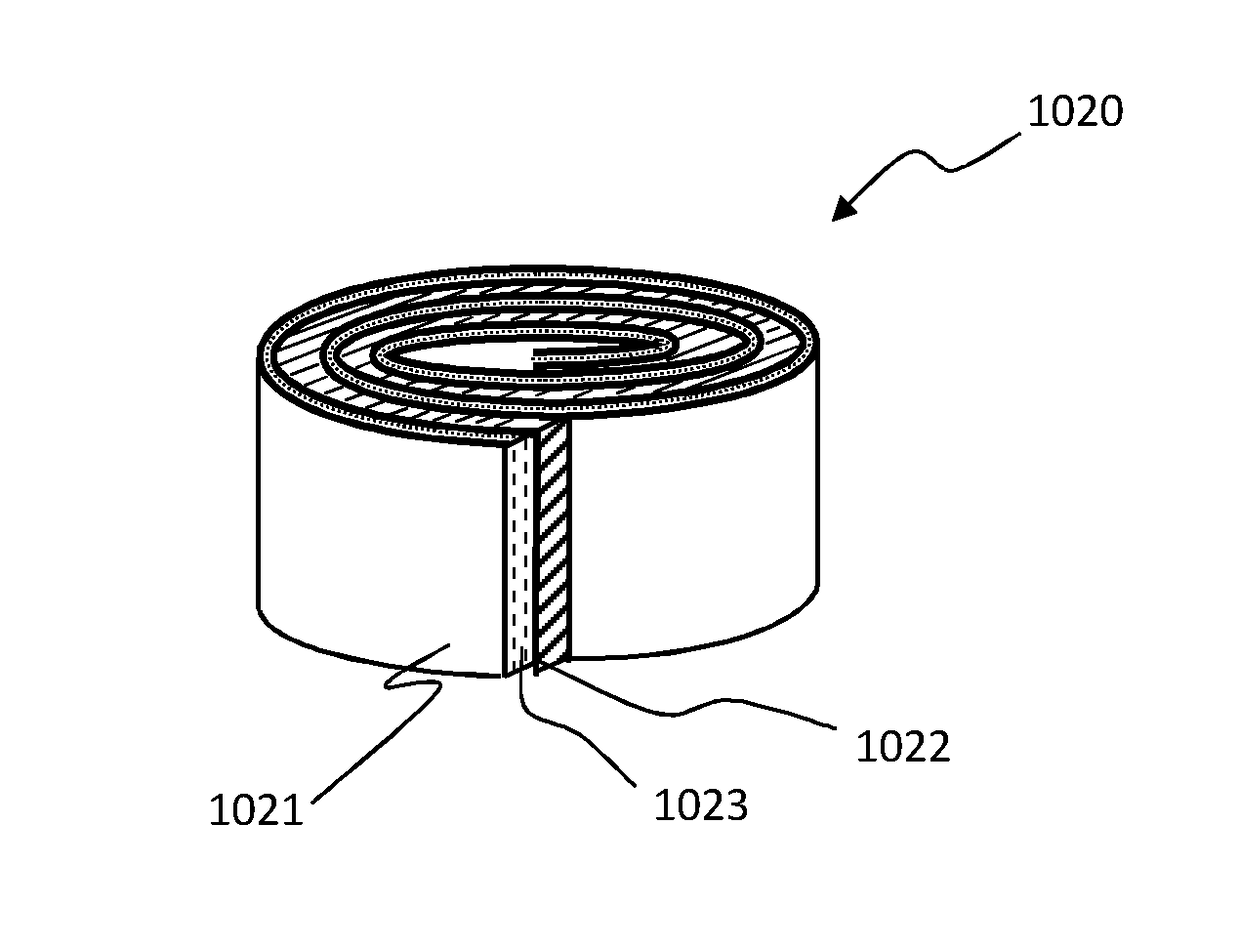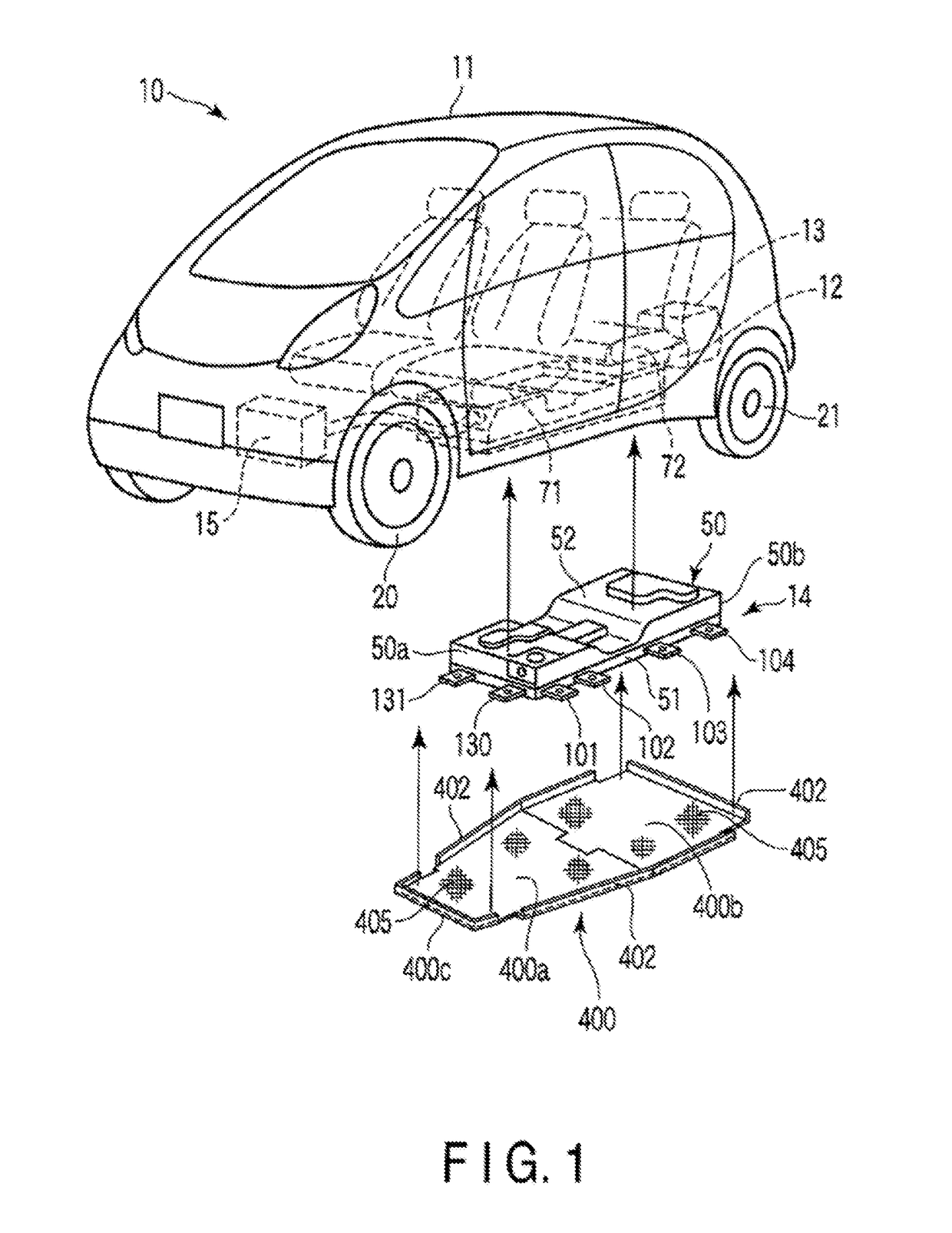Electric vehicle powered by capacitive energy storage modules
a technology of capacitive energy storage and electric vehicles, applied in the direction of capacitors, battery/fuel cell control arrangements, fixed capacitor details, etc., can solve the problems of affecting the appearance of electromagnetic shields, affecting various types of electric components mounted on the vehicle body, and requiring significant time for batteries to recharge, etc., to achieve simple and easy manner
- Summary
- Abstract
- Description
- Claims
- Application Information
AI Technical Summary
Benefits of technology
Problems solved by technology
Method used
Image
Examples
example 1
[0059]This Example describes synthesis of one type of Sharp polymer according following structural scheme:
The process involved in the synthesis in this example may be understood in terms of the following five steps.
a) First Step:
[0060]
[0061]Anhydride 1 (60.0 g, 0.15 mol, 1.0 eq), amine 2 (114.4 g, 0.34 mol, 2.2 eq) and imidazole (686.0 g, 10.2 mol, 30 eq to 2) were mixed well into a 500 mL of round-bottom flask equipped with a bump-guarder. The mixture was degassed three times, stirred at 160° C. for 3 hr, 180° C. for 3 hr, and cooled to rt. The reaction mixture was crushed into water (1000 mL) with stirring. Precipitate was collected with filtration, washed with water (2×500 mL), methanol (2×300 mL) and dried on high vacuum. The crude product was purified by flash chromatography column (CH2Cl2 / hexane=1 / 1) to give 77.2 g (48.7%) of the desired product 3 as an orange solid. 1H NMR (300 MHz, CDCl3) δ 8.65-8.59 (m, 8H), 5.20-5.16 (m, 2H), 2.29-2.22 (m, 4H), 1.88-1.82 (m, 4H), 1.40-1.13...
example 2
[0070]This Example describes synthesis of a Sharp polymer according following structural scheme:
[0071]The process involved in the synthesis in this example may be understood in terms of the following four steps.
[0072]a) First Step:
[0073]To a solution of the ketone 1 (37.0 g, 0.11 mol, 1.0 eq) in methanol (400 mL) was added ammonium acetate (85.3 g, 1.11 mol, 10.0 eq) and NaCNBH3 (28.5 g, 0.44 mol, 4.0 eq) in portions. The mixture was stirred at reflux for 6 hours, cooled to room temperature and concentrated. Sat. NaHCO3 (500 mL) was added to the residue and the mixture was stirred at room temperature for 1 hour. Precipitate was collected by filtration, washed with water (4×100 mL), dried on a high vacuum to give 33.6 g (87%) of the amine 2 as a white solid.
[0074]b) Second Step:
[0075]Mixed well the amine 2 (20.0 g, 58.7 mmol, 2.2 equ), 3,4,9,10-perylenetetracarboxylic dianhydride (10.5 g, 26.7 mmol, 1.0 eq) and imidazole (54.6 g, 0.80 mmol, 30 eq to diamine) into a 250 mL round-botto...
example 3
[0091]Carboxylic acid co-polymer P002. To a solution of 1.02 g (11.81 mmol) of methacrylic acid and 4.00 g (11.81 mmol) of stearylmethacrylate in 2.0 g isopropanol was added a solution of 0.030 g 2,2′-azobis(2-methylpropionitrile) (AIBN) in 5.0 g of toluene. The resulting solution was heated to 80 C for 20 hours in a sealed vial, after which it became noticeably viscous. NMR shows <2% remaining monomer. The solution was used without further purification in film formulations and other mixtures.
PUM
 Login to View More
Login to View More Abstract
Description
Claims
Application Information
 Login to View More
Login to View More - R&D
- Intellectual Property
- Life Sciences
- Materials
- Tech Scout
- Unparalleled Data Quality
- Higher Quality Content
- 60% Fewer Hallucinations
Browse by: Latest US Patents, China's latest patents, Technical Efficacy Thesaurus, Application Domain, Technology Topic, Popular Technical Reports.
© 2025 PatSnap. All rights reserved.Legal|Privacy policy|Modern Slavery Act Transparency Statement|Sitemap|About US| Contact US: help@patsnap.com



